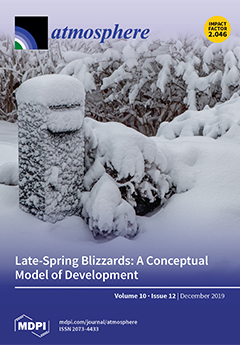Nitrogen dioxide (NO
2) is a common urban air pollutant that is associated with several adverse human health effects from both short and long term exposure. Additionally, NO
2 is highly reactive and can influence the mixing ratios of nitrogen oxide (NO)
[...] Read more.
Nitrogen dioxide (NO
2) is a common urban air pollutant that is associated with several adverse human health effects from both short and long term exposure. Additionally, NO
2 is highly reactive and can influence the mixing ratios of nitrogen oxide (NO) and ozone (O
3). Active green walls can filter numerous air pollutants whilst using little energy, and are thus a candidate for inclusion in green buildings, however, the remediation of NO
2 by active green walls remains untested. This work assessed the capacity of replicate active green walls to filter NO
2 at both ambient and elevated concentrations within a closed-loop flow reactor, while the concentrations of NO and O
3 were simultaneously monitored. Comparisons of each pollutant’s decay rate were made for green walls containing two plant species (
Spathiphyllum wallisii and
Syngonium podophyllum) and two lighting conditions (indoor and ultraviolet). Biofilter treatments for both plant species exhibited exponential decay for the biofiltration of all three pollutants at ambient concentrations. Furthermore, both treatments removed elevated concentrations of NO and NO
2, (average NO
2 clean air delivery rate of 661.32 and 550.8 m
3∙h
−1∙m
−3 of biofilter substrate for the respective plant species), although plant species and lighting conditions influenced the degree of NO
x removal. Elevated concentrations of NO
x compromised the removal efficiency of O
3. Whilst the current work provided evidence that effective filtration of NO
x is possible with green wall technology, long-term experiments under in situ conditions are needed to establish practical removal rates and plant health effects from prolonged exposure to air pollution.
Full article


